文章目录
1.Redis远程连接
1.1 Redis远程连接配置
修改redis配置文件
vim /home/redis-6.2.9/redis.conf
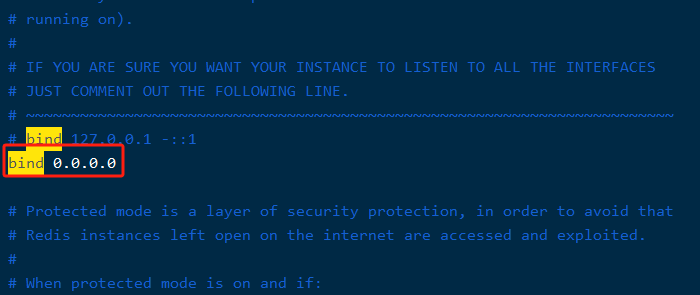

重启服务
./redis-cli -a 123456 shutdown
./redis-server /home/redis-6.2.9/redis.conf

如果开启防火墙,需要通过执行以下命令,开放6379端口
firewall-cmd --zone=public --add-port=6379/tcp --permanent
systemctl restart firewalld.service
firewall-cmd --reload
1.2 通过桌面版图形化界面连接Redis
使用2019.5版的redis-desktop-manager,因为这个是免费版本,最新的版本需要收费
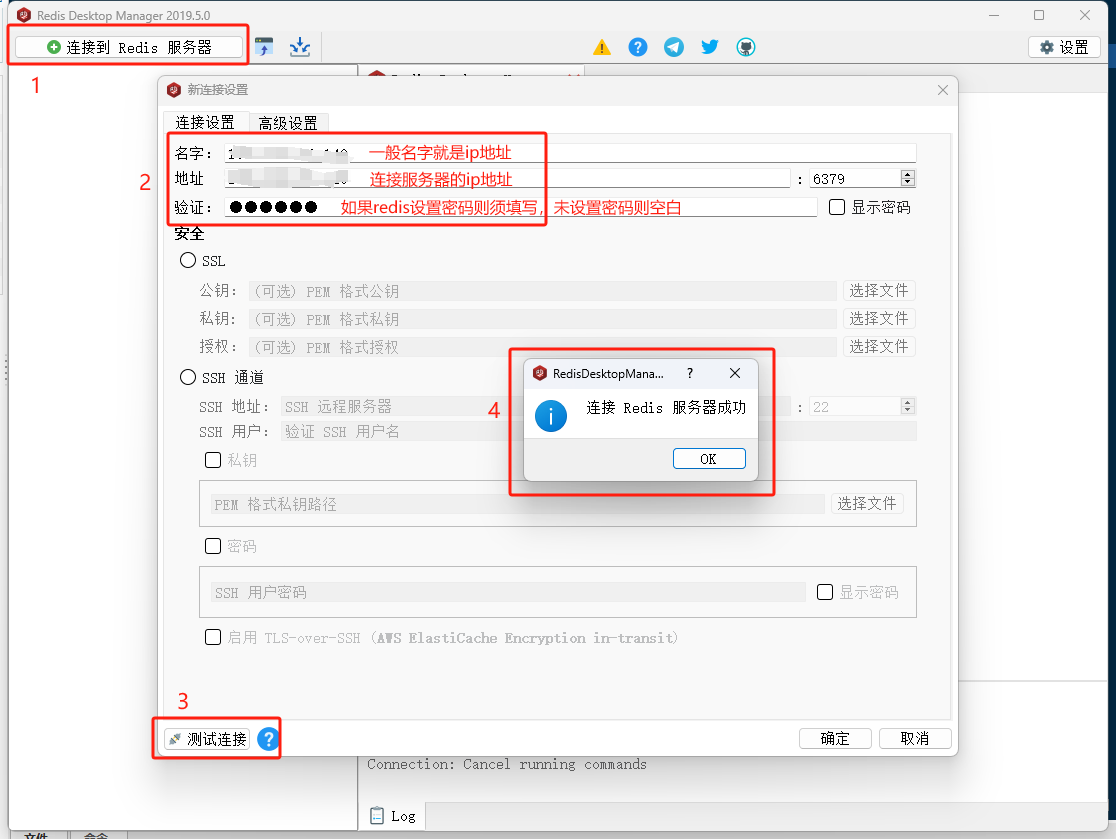
select id:切换到No.id的库
1.3 通过IDEA中的插件连接Redis
有收费的和免费的。遵循性价比原则,优先选择免费的使用,毕竟现在还在学习阶段。如果后期有需求的话,再做考虑。(当然免费的插件相比于收费的插件,功能会有所欠缺)
如果不想使用插件,完全可以使用redis-desktop-manager桌面版图形化工具
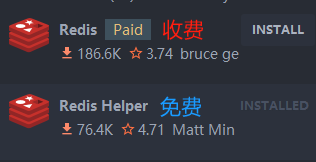
安装完成之后,会在右侧工具栏显示工具图标
如果没有显示的话,可以选择View -> Tool Windows -> Redis Helper进行显示
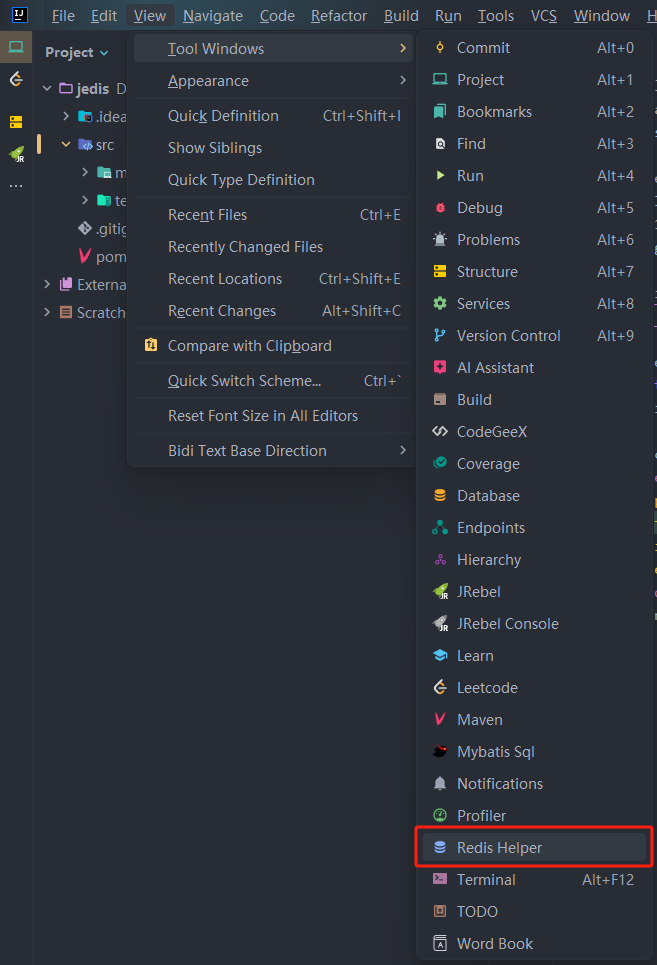
将所有信息填写好之后,点击TEST CONNECTION,收到Succeeded表示连接成功后,再点击OK
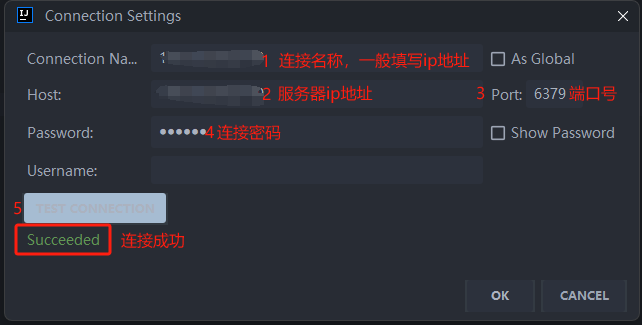
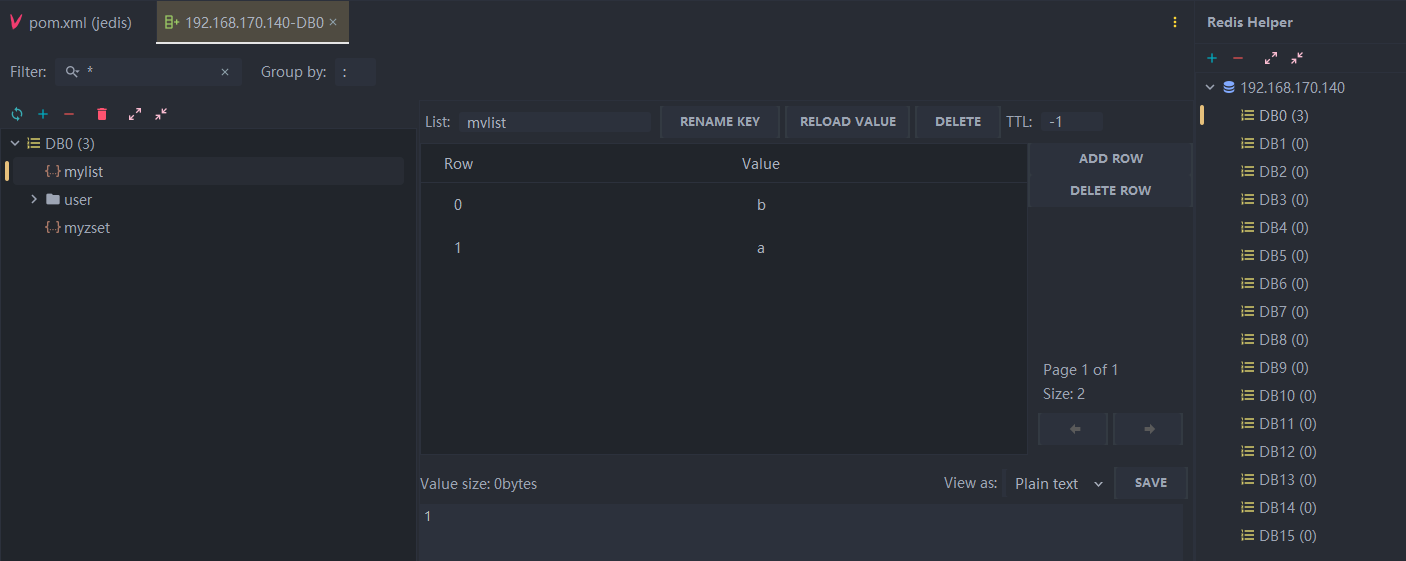
2.Jedis的基本使用
2.1 jedis概述
Redis不仅是使用命令来操作,现在基本上主流的语言都有客户端支持,比如java、C、C#、C++、php、Node.js、Go等。 在官方网站里列一些Java的客户端,有Jedis、Redisson、Jredis、JDBC-Redis、等其中官方推荐使用Jedis和Redisson。java操作redis的第三方类库:jedis、
2.2 jedis的基本操作
引入依赖
<dependencies>
<dependency>
<groupId>junit</groupId>
<artifactId>junit</artifactId>
<version>4.12</version>
<scope>test</scope>
</dependency>
<!-- jedis相关依赖 -->
<dependency>
<groupId>redis.clients</groupId>
<artifactId>jedis</artifactId>
<version>2.9.0</version>
</dependency>
</dependencies>
| 方法 | 解释 |
|---|---|
| new Jedis(host, port) | 创建jedis对象,参数host是redis服务器地址,参数port是redis服务端口 |
| set(key, value) | 设置字符串类型的数据 |
| get(key) | 获得字符串类型的数据 |
| hset(key, filed, value) | 设置哈希类型的数据 |
| hget(key, filed) | 获得哈希类型的数据 |
| lpush(key, values) | 设置列表类型的数据 |
| lpop(key) | 列表左面弹栈 |
| rpop(key) | 列表右面弹栈 |
| del(key) | 删除指定的key |
/**
* jedis中的方法名和redis中的命令是对应的
*/
public class JedisDemo01 {
private Jedis jedis;
@Before
public void init() {
// 1.通过jedis的构造方法设置连接参数
jedis = new Jedis("192.168.x.x", 6379);
// 2.设置连接密码
jedis.auth("123456");
// 3.选择索引为2的数据库,默认操作索引为0的数据库
jedis.select(2);
}
/**
* 存取set类型
*/
@Test
public void test01() {
// 4.存入String类型的数据
jedis.set("name", "Satellite");
// 5.取出key为name的value
System.out.println(jedis.get("name"));
}
/**
* 存取hash类型
*/
@Test
public void test02() {
// 4.存入hash类型的数据
jedis.hset("1班", "20101515131", "张三");
jedis.hset("1班", "20101515142", "李四");
jedis.hset("2班", "20101515241", "王五");
// 5.取出key为1班的value
System.out.println(jedis.hget("2班", "20101515241"));
jedis.hgetAll("1班").forEach((k, v) -> System.out.println(k + " " + v));
}
/**
* 存取list类型
*/
@Test
public void test03() {
// 4.存入hash类型的数据
jedis.lpush("myList", "a", "b", "c", "d");
// 5.取出key为myList的value
jedis.lrange("myList", 0, -1).forEach(System.out::println);
}
/**
* 存取去重set类型
*/
@Test
public void test04() {
// jedis.del("mySet");
jedis.sadd("mySet", "Satellite", "Planet", "Wang", "Wang");
jedis.smembers("mySet").forEach(System.out::println);
}
@After
public void release() {
// 6.释放资源
jedis.close();
}
}
2.3 jedis连接池
jedis连接资源的创建与销毁是很消耗程序性能,所以jedis为我们提供了jedis的池化技术,jedisPool在创建时初始化一些连接资源存储到连接池中,使用jedis连接资源时不需要创建,而是从连接池中获取一个资源进行redis的操作,使用完毕后,不需要销毁该jedis连接资源,而是将该资源归还给连接池,供其他请求使用
| 参数名 | 含义 |
|---|---|
| blockWhenExhausted | 连接耗尽时是否阻塞, false报异常,ture阻塞直到超时, 默认true |
| evictionPolicyClassName | 设置的逐出策略类名, 默认DefaultEvictionPolicy(当连接超过最大 空闲时间,或连接数超过最大空闲连接数) |
| lifo | 是否启用后进先出, 默认true |
| maxIdle | 最大空闲连接数, 默认8个 |
| maxTotal | 最大连接数, 默认8个 |
| maxWaitMillis | 获取连接时的最大等待毫秒数(如果设置为阻塞时 BlockWhenExhausted),如果超时就抛异常, 小于零:阻塞不确定的时间, 默认-1 |
| minEvictableIdleTimeMillis | 逐出连接的最小空闲时间 默认1800000毫秒(30分钟) |
| minIdle | 最小空闲连接数, 默认0 |
| testOnBorrow | 在获取连接的时候检查有效性, 默认false |
package jedis;
import org.junit.Test;
import redis.clients.jedis.Jedis;
import redis.clients.jedis.JedisPool;
import redis.clients.jedis.JedisPoolConfig;
/**
* 通过JedisPool连接redis,提高连接效率
*/
public class JedisPoolDemo02 {
@Test
public void test01() {
// 1.初始化连接池相关配置
JedisPoolConfig jedisPoolConfig = new JedisPoolConfig();
jedisPoolConfig.setMaxTotal(20);
jedisPoolConfig.setMaxIdle(5);
// 2.使用连接池的配置,初始化连接池
JedisPool jedisPool = new JedisPool(jedisPoolConfig, "192.168.170.140", 6379, 1000, "123456");
// 3.获取jedis对象,来操作redis
Jedis jedisPoolResource = jedisPool.getResource();
// 4.通过jedis对象操作redis
jedisPoolResource.set("gender", "female");
System.out.println(jedisPoolResource.get("gender"));
// 5.释放资源
jedisPoolResource.close();
jedisPool.close();
}
}
3.Spring整合Redis
3.1 新建maven工程,引入相关依赖
<dependencies>
<dependency>
<groupId>org.junit.jupiter</groupId>
<artifactId>junit-jupiter-api</artifactId>
<version>5.8.2</version>
<scope>test</scope>
</dependency>
<!-- 引入spring相关依赖 -->
<dependency>
<groupId>org.springframework</groupId>
<artifactId>spring-tx</artifactId>
<version>5.3.20</version>
</dependency>
<dependency>
<groupId>org.springframework</groupId>
<artifactId>spring-test</artifactId>
<version>5.3.20</version>
</dependency>
<!-- 引入jedis相关依赖 -->
<dependency>
<groupId>redis.clients</groupId>
<artifactId>jedis</artifactId>
<version>2.9.0</version>
</dependency>
<!-- 引入spring-data-redis相关依赖 -->
<dependency>
<groupId>org.springframework.data</groupId>
<artifactId>spring-data-redis</artifactId>
<version>1.8.14.RELEASE</version>
</dependency>
<!-- 日志相关的依赖 -->
<dependency>
<groupId>org.slf4j</groupId>
<artifactId>slf4j-api</artifactId>
<version>1.7.36</version>
</dependency>
<dependency>
<groupId>org.slf4j</groupId>
<artifactId>slf4j-simple</artifactId>
<version>1.7.36</version>
</dependency>
</dependencies>
3.2 redis.properties
# redis连接参数
redis.host=192.168.x.x
redis.port=6379
redis.password=123456
redis.dbIndex=3
# jedisPool相关参数
redis.maxTotal=20
redis.maxIdle=5
redis.timeout=10000
3.3 spring-redis.xml
<?xml version="1.0" encoding="UTF-8"?>
<beans xmlns="http://www.springframework.org/schema/beans"
xmlns:xsi="http://www.w3.org/2001/XMLSchema-instance" xmlns:context="http://www.springframework.org/schema/context"
xsi:schemaLocation="http://www.springframework.org/schema/beans http://www.springframework.org/schema/beans/spring-beans.xsd http://www.springframework.org/schema/context http://www.springframework.org/schema/context/spring-context.xsd">
<!-- 配置注解扫描器 -->
<context:component-scan base-package="io.redis"/>
<!-- 加载redis.properties配置文件 -->
<context:property-placeholder location="classpath:redis.properties"/>
<!-- 配置JedisPoolConfig -->
<bean id="jedisPoolConfig" class="redis.clients.jedis.JedisPoolConfig">
<property name="maxTotal" value="${redis.maxTotal}"/>
<property name="maxIdle" value="${redis.maxIdle}"/>
</bean>
<!-- 配置JedisConnectionFactory -->
<bean id="jedisConnectionFactory" class="org.springframework.data.redis.connection.jedis.JedisConnectionFactory">
<!-- 注入redis相关配置 -->
<property name="hostName" value="${redis.host}"/>
<property name="port" value="${redis.port}"/>
<property name="password" value="${redis.password}"/>
<property name="database" value="${redis.dbIndex}"/>
<property name="timeout" value="${redis.timeout}"/>
<!-- 注入连接池配置 -->
<property name="poolConfig" ref="jedisPoolConfig"/>
</bean>
<!-- 配置redis操作模板RedisTemplate,通过这个模板操作redis数据库 -->
<bean id="stringRedisSerializer" class="org.springframework.data.redis.serializer.StringRedisSerializer"/>
<bean id="redisTemplate" class="org.springframework.data.redis.core.RedisTemplate">
<property name="connectionFactory" ref="jedisConnectionFactory"/>
<!-- 指定序列化器,解决redis中key乱码问题 -->
<property name="keySerializer" ref="stringRedisSerializer"/>
<property name="valueSerializer" ref="stringRedisSerializer"/>
<property name="hashKeySerializer" ref="stringRedisSerializer"/>
<property name="hashValueSerializer" ref="stringRedisSerializer"/>
</bean>
</beans>
3.4 Redis工具类Redisutils
package io.redis.utils;
import org.springframework.beans.factory.annotation.Autowired;
import org.springframework.data.redis.core.RedisTemplate;
import org.springframework.stereotype.Component;
import org.springframework.util.StringUtils;
import java.util.concurrent.TimeUnit;
/**
* Redis工具类,为了方便操作redis
*/
@Component
public class RedisUtils {
@Autowired
RedisTemplate<String, Object> redisTemplate;
/**
* 向redis中存入string类型数据
*
* @param key
* @param value
* @return
*/
public boolean set(String key, Object value) {
try {
redisTemplate.opsForValue().set(key, value);
} catch (Exception e) {
e.printStackTrace();
return false;
}
return true;
}
/**
* 根据key取出redis中的string数据
*
* @param key
* @return
*/
public Object get(String key) {
return StringUtils.isEmpty(key) ? null : redisTemplate.opsForValue().get(key);
}
/**
* 向redis中存入hash类型数据
*
* @param key
* @param field
* @param value
* @return
*/
public boolean hset(String key, Object field, Object value) {
try {
redisTemplate.opsForHash().put(key, field, value);
} catch (Exception e) {
e.printStackTrace();
return false;
}
return true;
}
/**
* 根据key和filed取出redis中的hash数据
*
* @param key
* @return
*/
public Object hget(String key, Object filed) {
return StringUtils.isEmpty(key) ? null : redisTemplate.opsForHash().get(key, filed);
}
/**
* 通用方法:根据key删除redis中对应的数据
*
* @param key
* @return
*/
public boolean del(String key) {
try {
redisTemplate.delete(key);
} catch (Exception e) {
e.printStackTrace();
return false;
}
return true;
}
/**
* 通用方法:判断key是否存在
*
* @param key
* @return
*/
public boolean exist(String key) {
try {
return redisTemplate.hasKey(key);
} catch (Exception e) {
e.printStackTrace();
return false;
}
}
/**
* 为某个key设置过期时间
*
* @param key
* @param timeout
* @return
*/
public boolean expire(String key, long timeout) {
try {
return redisTemplate.expire(key, timeout, TimeUnit.SECONDS);
} catch (Exception e) {
e.printStackTrace();
return false;
}
}
/**
* 查看key的剩余存活时间
*
* @return
*/
public long ttl(String key) {
return redisTemplate.getExpire(key, TimeUnit.SECONDS);
}
}
3.5 测试RedisUtils
package io.redis.utils;
import org.junit.jupiter.api.Test;
import org.springframework.beans.factory.annotation.Autowired;
import org.springframework.test.context.junit.jupiter.SpringJUnitConfig;
import static org.junit.jupiter.api.Assertions.*;
@SpringJUnitConfig(locations = "classpath:spring-redis.xml")
class RedisUtilsTest {
@Autowired
RedisUtils redisUtils;
@Test
void set() {
redisUtils.set("name", "Satelite");
}
@Test
void get() {
System.out.println(redisUtils.get("name"));
}
}
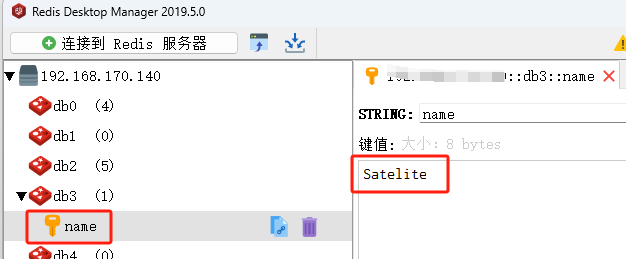
























 2万+
2万+

 被折叠的 条评论
为什么被折叠?
被折叠的 条评论
为什么被折叠?








